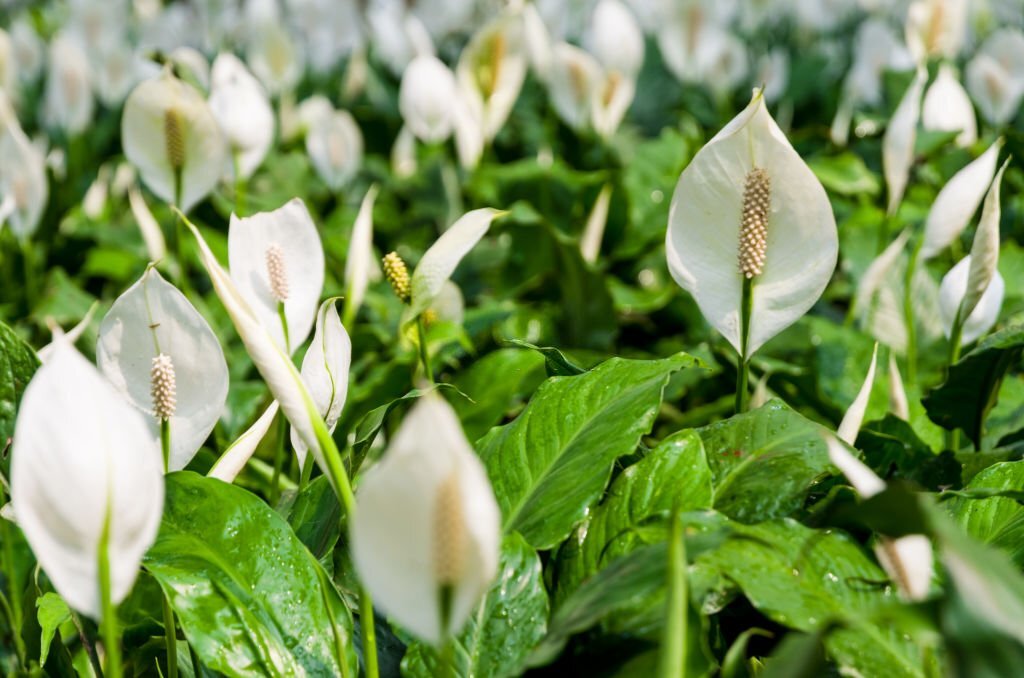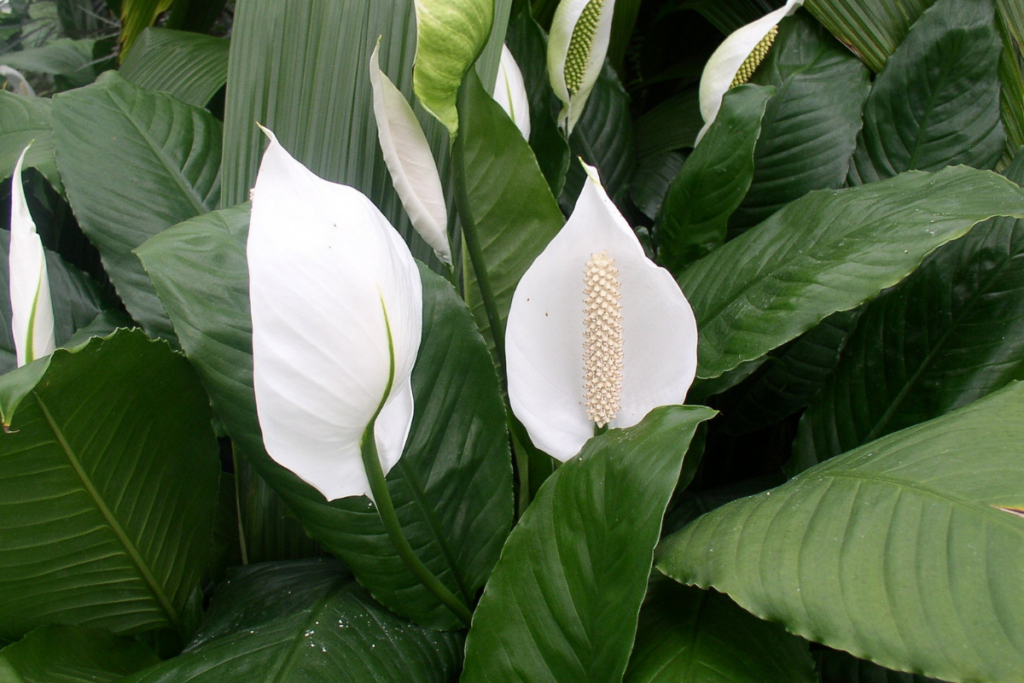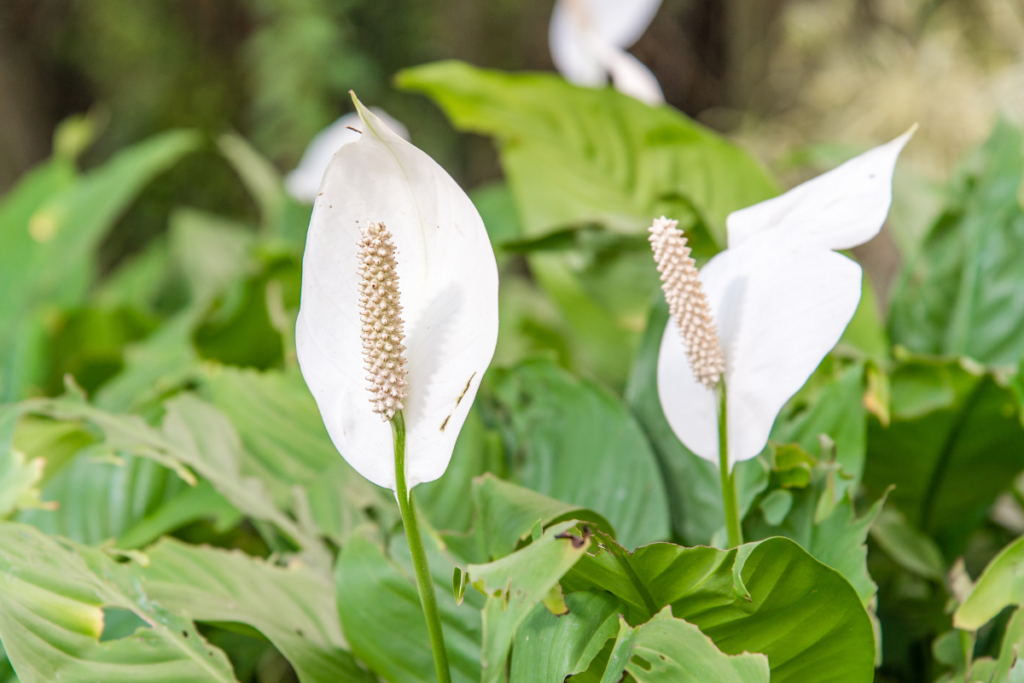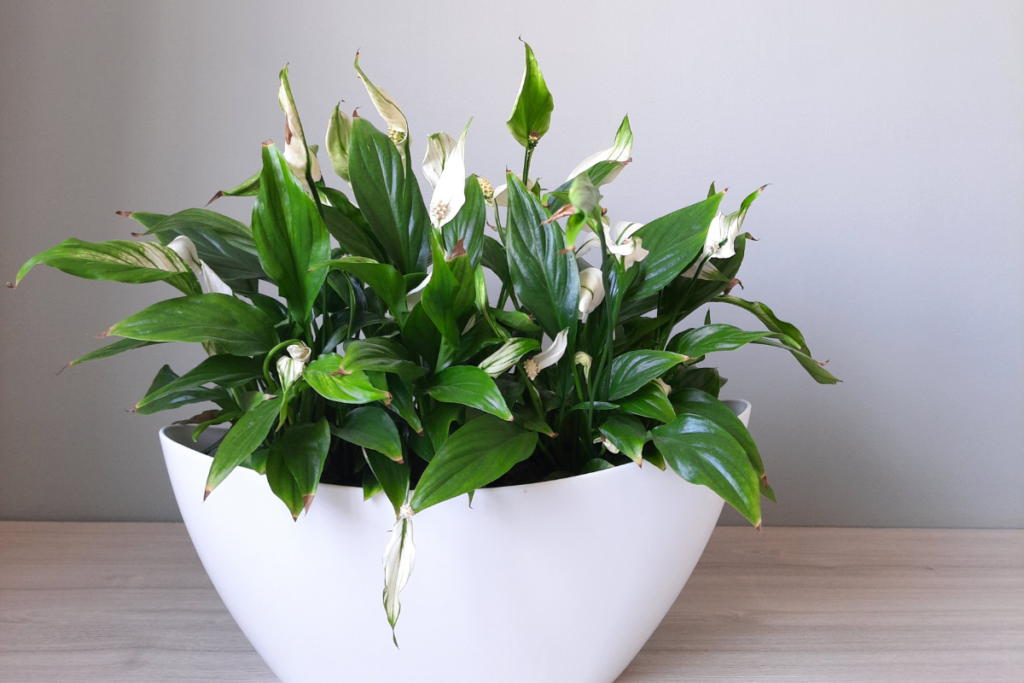Every few years, it is essential that you divide your peace lilies. Giving your plants more area to develop will increase the number of peace lilies you have and keep them healthier. This is a terrific method to expand your collection of plants without cashing out. Keep reading for tips on how to divide peace lily plants.

Peace lily plants may be propagated through division provided that they have several crowns, which are the connective tissues joining the stalks and the roots. In other words, someone can split up a single plant into several new ones.
In this article, we willl walk you through the process of dividing peace lily plants, as well as how to maintain them healthy once they’ve been divided. We can assure you that although this procedure may appear intimidating, it is easier than it seems.
So, let’s get started!
What You Must Know Before Dividing Your Peace Lilies

There are a few things you should be aware of before we get into detail about peace lily plant division. Here’s what you must know:
- Peace Lilies are not propagated through cuttings
Not any plant could be multiplied from cuttings, just like your Peace Lilies. This is because the nodes that produce new roots and stalks are found in the rhizome.
Rhizomes grow horizontally as opposed to vertically, producing new leaves and roots all the way along their length. You must carefully remove the rhizomes from the whole peace lily in order to reproduce your Spathiphyllum plant.
- Choose Between Repotting or Dividing
Eventually, your Spathiphyllum plant will overflow its container. When this occurs, you may either divide it into many plants or transplant it in a larger container. But which is better, then?
If you want to grow extra plants so you can give some away to friends or family or sell them, dividing your peace lilies is the ideal solution. It’s also a fantastic method to fill in bare spots in your yard. Also, this approach is quicker and more practical than starting fresh peace lilies from seeds, which requires pollinating the plant, collecting the seeds, and then waiting for them to sprout.
You are also certain to acquire a plant that is genetically identical to the parent plant when you propagate peace lilies through division. This implies that the young plants will resemble the parent plants and grow to be the same size when fully grown.
On the other hand, transplanting your peace lily in a bigger pot is definitely the best option if you’re low on room or just want to keep things simple.
If the plant has already outgrown its container, you should repot it or divide it as soon as possible. Otherwise, rootbound might affect it, which can result in stunted growth and wilting leaves.
- The Right Time To Divide A Peace Lily
The optimum time to divide peace lilies is in the spring or early summer when the plant is actively developing, and the weather is warm, even though you may theoretically divide them at any time of the year.
This is because the plant will be more likely to create new growth and be able to recuperate more quickly from the stress of division. Avoid excessive temperatures since they might stress plants.
Divide your peace lilies when they exhibit indications of overcrowding or rootboundness from the same pot rather than waiting till the appropriate time of year, for example:
- There are several crowns visible in the container.
- Plants ceased blossoming or produced fewer blooms
- The soil immediately dries out after irrigation.
- You can observe roots poking through the drainage holes or on the potting mix’s top.
RELATED: How To Revive A Dying Peace Lily: Essential Tips and Tricks
Things To Prepare Before Dividing Peace Lilies

There are a few things you should do in advance before dividing your peace lilies:
- Choose whether to plant in water or soil.
Choosing whether to plant your divided peace lilies in soil or water is the first thing you must do.
Since you don’t have to bother about potting soil or drainage, growing in water is less dirty and laborious. All you need is some fresh water and a clean container. Your peace lily’s roots may also expand more quickly in water since they will have immediate access to nutrients and oxygen. Just bear in mind that it’s not a long-term solution, and you will ultimately need to move the plant to the soil.
Nevertheless, planting in the ground requires a little more effort since you need to prepare the potting mix and ensure that it has sufficient drainage.
Because they will need to look for food and water, the roots in the soil will likewise develop more slowly. Yet, this approach is the most effective since it enables the plant’s roots to expand out and firmly anchor it.
You have complete discretion over the approach you use. But bear in mind that the care instructions will need to be adjusted accordingly.
For instance, if you’re growing your peace lily in water, make sure to use a clean container and replace the water once a week. Also, since the nutrients will drain out more quickly, you will need to fertilize more frequently.
- Choose the Proper Pot
If you wish to transplant your peace lily into the soil, picking the appropriate container is crucial. The container needs to be spotless, big enough to hold the roots, and have holes for drainage.
Since plastic pots are more affordable and lightweight than ceramic or clay pots, I favor using them. Also, they won’t break if you drop them. You may put the plastic pots inside ornamental pots.
The majority of the time, peace lilies may be divided into pots of a comparable size. Still, if you’re repotting the plant, you should use a container that is 2-3 inches larger in diameter.
Keep in mind that using a bigger pot might result in overwatering and root damage. Here is a more detailed procedure for proper repotting of peace lilies.
- Prepare the Soil Mix
As peace lilies dislike sitting in moist soil, we suggest choosing an airy and well-draining potting mix. You may create your own potting mixture by combining the following:
- (25%) Orchid bark
- (25%) Coconut coir
- (30%) Perlite
- (10%) Activated charcoal
- (10%) Worm Castings
You may buy ready-made potting mixes from your neighborhood garden shop if you want to prepare something other than your own. Just make sure it says “for tropical plants” or “well-draining” on the label.
- Prepare your tools
You might need to collect a few tools to aid in the division process, such as a clean knife or pair of garden shears, gloves, and a trowel.
RELATED: Trimming or Pruning Peace Lily: How and Why Is It Important For Peace Lily Growth
Steps To Divide Peace Lily Plants

The complete steps to divide your peace lilies are as follows:
- Dig Up the Roots and Remove the Plant
The entire peace lily plant must first be taken out of its pot as the first step. Holding the plant by the stems and turning the container on its side with one hand is the simplest method to accomplish this. Gently tap the pot’s base to make the plant slide out.
Try tapping the pot on the ground a few times or running a knife over the pot’s edge if the plant won’t come out easily. Also, reducing watering a few days before division simplifies removing the plant.
Brush the plant’s roots carefully after taking it from the pot to remove any extra soil. Rinse the roots with water to get rid of any dirt that remains on them.
Remove any mushy or dead roots using a clean knife or pair of garden shears. These roots should be kept in place since they won’t regrow and might promote root rot.
- Identify the Crowns
It’s time to look for growth crowns once the roots have been cleared of dirt and debris.
Where the rhizome’s leaves and roots first appear is known as the growth crown. There is usually at least one growth crown on each peace lily, but as they become older, they can sprout numerous crowns.
Look for the compact group of stems coming from a single location on the rhizome to detect the growth crowns. The plant can be divided once it has at least two crowns.
Here is a tip: In order for one of the crowns to survive division, if it is too little, it is preferable to retain it linked to a bigger one.
- Divide the Crowns
Younger peace lilies’ rhizomes are softer and less woody, which makes dividing them considerably simpler. The plant is simple to rip apart by hand.
It might be more difficult to divide older plants. To free up each portion of the crown, you first need to snip away a few of the tangled roots using sterile shears or a sharp knife. The plant can then be cut or pulled apart after that.
Make sure each of the crowns has a substantial portion of the rhizome and a root ball or multiple roots attached before splitting. This will lessen stress and promote quicker development.
- Plant the divisions and water them properly
You must pre-fill the pots with the potting mix up to a specific soil level before putting the new peace lily plants in their new pots. By doing this, you can be sure that your plant will be properly positioned in its container and that its roots will have enough space to grow out.
Place your division within the container to determine how high the potting mix should be. Place each newly divided peace lilies into its new pot after pre-filling the pots. Around the roots, add additional potting soil until it is level with the surrounding soil.
Water each plant thoroughly once all divisions have been potted up, making that the water drains out of the bottom of the container. Since that peace lilies are prone to root rot, it’s crucial to avoid overwatering them. Know how to water your peace lily the right way.
Aftercare for Divided Peace Lilies

It’s critical to monitor your newly divided plants to ensure that they are settling in well. In essence, you should take the same precautions you would for a newly planted plant.
Keep the soil damp but not drenched. Before watering, insert your finger into the soil to measure its moisture content. Wait a little while for the mixture to dry out before watering it again if it still seems wet.
Put the new plants in a location with bright, indirect light as well. You might want to offer some midday shade if you live in a very hot region to avoid the leaves from burning.
You must make sure there is a high amount of humidity (more than 50%) surrounding your division because that is their natural environment.
Investing in a humidifier for your plants is advisable if you have the money. Alternatively, you can place the pots on a tray filled with water and pebbles or enclose the plants in a clear plastic bag.
You ought to begin to notice fresh growth in your divisions after a month. You’ll know they’ve effectively rooted and are progressing toward becoming mature plants when you see them. Once a year, generally in the spring or summer, peace lilies bloom. Yet, if you take the proper precautions, you can promote blossoming more frequently than once a year.
RELATED: How To Get More Peace Lily Flowers: Helpful Tips and Tricks
Frequently Asked Questions
How frequently does a peace lily outgrow its pot?
A juvenile peace lily will often outgrow its container in 1–2 years. However, an older, more established plant could only require division or repotting every three to five years. The size of the pot and how well you take care of your plant will determine this.
It is preferable to divide and repot them every two years to maintain their health, promote development, and have more plants!
Can peace lilies be divided when they are in bloom?
While peace lilies are in bloom, you can split them, but the plant will probably be agitated, and the bloom will probably wilt too soon. In order to prevent harming the flowers, you should ideally wait until the bloom has faded.
Would division harm a Peace Lily’s flowering?
When a peace lily is already in bloom, splitting it will probably cause the blooms to droop and die too soon. Once it has adjusted to its new pot, the plant should recuperate and resume blooming normally.
Peace lilies typically only bloom once a year, in the spring or fall, depending on the climate and light conditions. Yet, if you take good care of them, you can promote blossoming more frequently than once a year.
Final Thoughts

Division is an ideal way to propagate plants like Peace Lilies. Take a shot at dividing your peace lilies to maintain your plants healthy and, of course, for you to have more of them! The more, the merrier, right?
For more guide, here is a video you can watch to help you learn more about peace lily propagation and peace lily division.
Thank you for reading our tips on how to divide peace lily plants. Also, check out our other articles:
How To Propagate Pothos: Thing To Consider







